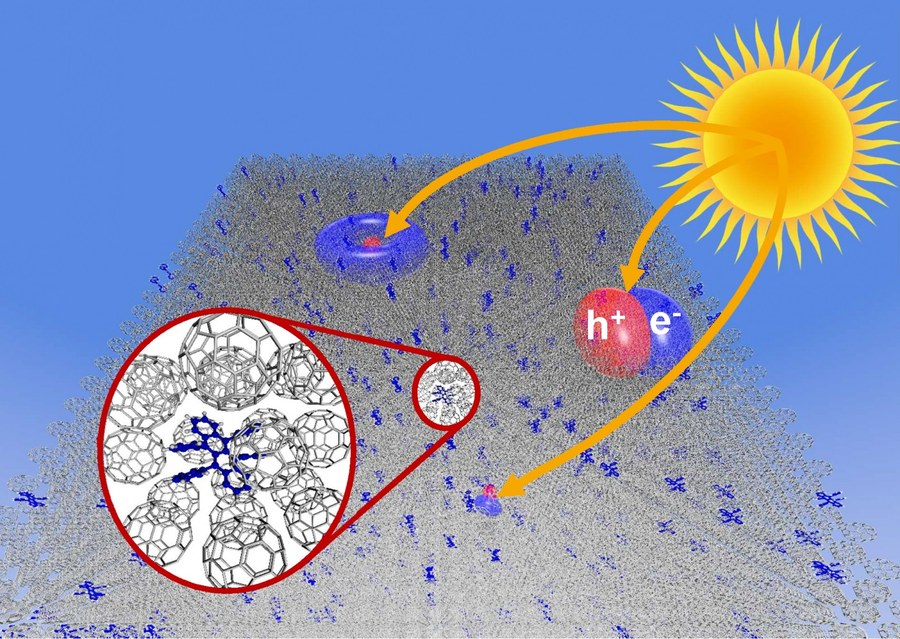Mar 23 2020
Researchers at TU Dresden and Hasselt University in Belgium examined the physical causes that restrict the efficiency of the advanced solar cells based on organic molecular materials. At present, the voltage of such cells is still very low—this is one reason why solar cells still have comparably low efficiencies.
 Illustration of the generation of charge pairs (excitons), the precursors of free charge carriers in the active layer of an organic solar cell. Free charge carriers then generate an electric voltage at the contacts of the cell. The lower image section shows a microscopic model of the organic thin film. Image Credit: TU Dresden.
Illustration of the generation of charge pairs (excitons), the precursors of free charge carriers in the active layer of an organic solar cell. Free charge carriers then generate an electric voltage at the contacts of the cell. The lower image section shows a microscopic model of the organic thin film. Image Credit: TU Dresden.
In this research, the researchers examined the vibrations of the molecules in the thin films, revealing that very basic quantum effects, known as zero-point vibrations, could contribute considerably to voltage losses. The study has been recently reported in the Nature Communications journal.
Solar cells are highly crucial for the essential transformation of worldwide energy production. Organic photovoltaics (OPV) based on organic (or carbon-based) materials could be the material of choice as a crucial foundation in the energy mix of the “renewables” since they possess an improved ecological balance sheet than the traditional silicon-based modules. Only small amounts of these materials are needed to produce thin films.
But it is vital to achieving a further increase in efficiency. It is based on several characteristic values like the open-circuit voltage, whose very low values are presently the main cause for the moderate efficiencies of OPV.
The physical reasons for the moderate efficiency of OPV were analyzed in this study by the researchers, such as the vibrations of the molecules in the thin films. It was demonstrated that the so-called zero-point vibrations, which are an effect of quantum physics that governs the motion at absolute temperature zero, can have a considerable effect on voltage losses.
The researchers illustrated a direct relationship between macroscopic device properties and molecular properties. The findings offered essential information for the further enhancement and development of new organic materials.
The low energy band of the optical absorption spectra is vital for solar cell performance. However, this is not perceived well in the case of organic solar cells that have several influencing factors. In this study, the researchers investigated the microscopic origin of absorption bands in molecular blend systems and their role in organic solar cells.
The study’s focus was on the dependence of the absorption characteristics on temperature, which was theoretically examined by considering the molecular vibrations. The simulations were in good agreement with the experimentally quantified absorption spectra, resulting in several essential findings.
The researchers identified that the zero-point vibrations, brought about by electron-phonon interaction, leads to a significant absorption bandwidth. This results in the remission of a portion of the energy that is not used, thereby decreasing the open-circuit voltage.
Such voltage losses can be estimated from vibronic and electronic molecular parameters. The exceptional feature of this effect is that it is powerful even at room temperature and can considerably decrease the efficiency of the organic solar cell.
What kind of strategies must be employed to decrease these vibration-induced voltage losses is being debated by the researchers for several systems and different heterojunction geometries.